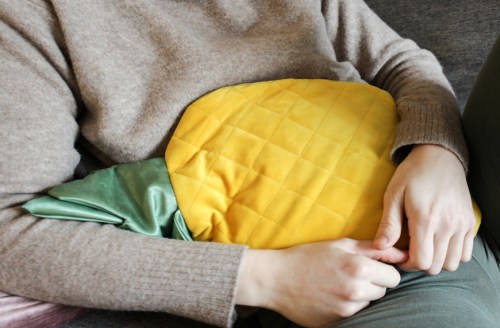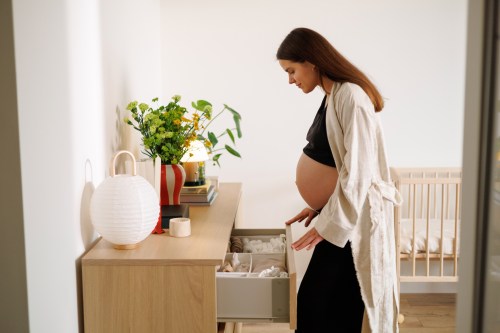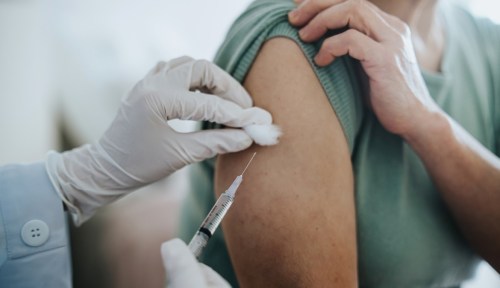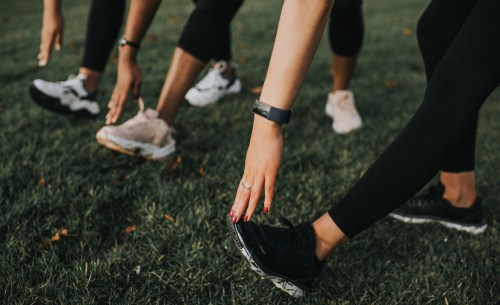Our editors independently select these products. Making a purchase through our links may earn Well+Good a commission
Cramps are an unfortunate side effect of having your period, but they’re common nonetheless. Sometimes they’re subtle, while at other moments, they can feel downright crippling. And then there’s the fact that cramps can also pop up as a side effect of tending to your menstrual cycle. Have you ever put in a tampon, and then all of a sudden a new waves of cramps hit? You probably can’t help wondering, Do tampons make cramps worse? Menstrual product discomfort is a real thing.
Experts in This Article
board-certified OB/GYN at Orlando Health Winnie Palmer Hospital
OB/GYN and co-founder of DeoDoc Intimate Skincare
board-certified OB/GYN and clinical professor at the Yale University School of Medicine
But why does tampon-related pain happen, exactly? And does it mean you shouldn’t be using tampons at all? We gathered the OB/GYN insights you need to know.
First things first: Why you get cramps during your period
When you have your period, your uterus contracts to help get rid of the lining that has built up over the past few weeks. Those contractions cause cramps, says OB/GYN Gunvor Ekman-Ordeberg, MD, co-founder of DeoDoc Intimate Skincare.
Diving deeper, Christine Greves, MD, a board-certified OB/GYN at the Winnie Palmer Hospital for Women and Babies in Orlando, reveals that hormone-like substances called prostaglandins, which are also involved in pain and inflammation, trigger those contractions. The amount of prostaglandins in your body can vary and, when they’re high, you can have more severe period cramps, she says. While some discomfort during your period is expected, excessive pain isn’t normal and should be explored with your doctor.
Okay, why are my cramps worse when I wear tampons?
Quick anatomy lesson: Period cramps come from contractions in your uterus, and you insert a tampon into your vagina, which is the muscular canal that goes from your vulva (your external genital area) to the bottom of your uterus, i.e. your cervix, Dr. Greves says. Meaning that the tampon doesn’t even touch your uterus.
“There is probably a confounding variable when you feel cramps after you insert a tampon,” Dr. Greves says. “The cramps are occurring because you’re on your period—it’s unlikely that the tampon itself is causing them.”
However, there could be something else going on that’s causing you to feel pain when you insert a tampon that you may be mistaking for cramps, says Mary Jane Minkin, MD, a clinical professor of obstetrics and gynecology and reproductive sciences at Yale Medical School. A few possibilities:
The tampon is too big
There’s really no biological reason that a tampon would cause uterine cramps. However, Dr. Greves says, “if the tampon is too large, it could cause discomfort.” So, there’s a chance that you may misinterpret that pain as cramps.
You’ve inserted the tampon incorrectly
Much like inserting a tampon that’s too large, you might feel some discomfort if your tampon isn’t far enough inside of you. While this shouldn’t cause cramping, it can cause some discomfort and pain. Try using a clean finger to gently nudge it further inside of you, and see if that helps.
The tampon materials are irritating
While some organic tampons exist nowadays, Dr. Ekman-Ordeberg points out that most conventional tampons “are made out of plastics and synthetic fibers, and these materials can irritate the vaginal wall.” Worried your tampons may be the culprit? Read up on ingredients to look out for in tampons. While you’re at it, check the expiration date, as well, because older tamps can harbor bacteria and trigger discomfort and potential infection. Don’t leave yourself wondering how long you can leave a tampon in, and be sure to change it every four-to-eight hours to minimize irritation.
You have vulvodynia
This is a condition that causes pain in the vulva that lasts for three months or more and is not caused by an infection, skin disorder, or other medication condition, according to the American College of Obstetricians and Gynecologists (ACOG). Vulvodynia can cause symptoms like burning, stinging, irritation, rawness, throbbing, and swelling. The symptoms can come and go, and they may happen only when the area is touched, ACOG says. Dr. Greves says it’s possible to have pain that feels like cramps after you insert a tampon if you happen to have vulvodynia.
It’s due to vaginismus
This is a condition that causes reflexive tightening of the muscles at the end of your vagina, ACOG explains. It can cause pain when you try to have sex and can also leave you uncomfortable when you try to insert a tampon, Dr. Greves says. It’s possible that those “cramps” you’re feeling are actually the muscles of your vagina tightening due to this condition, she says.
You have endometriosis
Endometriosis is a condition that happens when tissue similar to the lining of your uterus grows outside of it, according to the U.S. Office on Women’s Health. Endometriosis, which impacts more than 11 percent of American women between the ages of 15 and 44, can cause symptoms like very painful period cramps, pain during or after sex, bleeding or spotting between periods, infertility, and digestive issues like diarrhea, constipation, or bloating. Endometriosis usually flares when you have your period, Dr. Minkin says. “If you insert something [like a tampon], that could put pressure on some endometriosis tissue, leading to pain,” she says.
Should I wear a tampon if I have cramps?
Since tampons aren’t directly responsible for cramping, Dr. Ekman-Ordeberg says that whether or not you use a tampon while already cramping is totally up to you.
It’s not so much about the menstrual hygiene products you use, but the medications and remedies you opt for to alleviate period pain. “Menstruation is an inflammatory process, which is why anti-inflammatory painkillers such as Advil and Tylenol are recommended as the first option,” Dr. Ekman-Ordeberg says. (If you prefer a more natural option, consider taking magnesium for cramps—it will help calm the nervous system, reducing cramps in the process.) “We also know that heat temporarily blocks pain receptors, so a heat patch (like the Deo Doc Menstrual Heat Patches, $15) or hot water bottle can help ease period pain and cramps.”
Meanwhile, if you don’t mind getting a little hands-on, some people swear by suppositories. The FORIA Relief CBD Melts ($50) are designed to melt inside the vagina to instantly soothe inflammation, thus diminishing menstrual discomfort. Alternatively, if you like high-tech wellness solutions, you may be interested in checking out the Therabody TENS unit Power Dot 2.0 Duo, which is said to be a “game-changer” for period cramps.
When to contact a doctor
Women’s health concerns shouldn’t be ignored. If your tampon-related period pain is random and short-lived, Dr. Greves says you can bring it up at your next check-in with your provider—there’s no need to rush it. If, however, you’re having cramping after you insert a tampon and it’s severely uncomfortable or even debilitating, Dr. Minkin suggests reaching out to your doctor to get checked out. It may simply be that you’re noticing regular period cramps after you put in a tampon, or there could be something else going on. Either way, you shouldn’t have to live with pain.
And that goes for typical, non-tampon-related cramping, too. “If you have cramps that do not go away after taking painkillers or adding heat, you need to talk to your doctor,” Dr. Ekman-Ordeberg says. “Some pain during your period is normal, but if it affects your daily life and you are not able to work properly or if you are throwing up because of the pain—then a doctor’s consultation is a good idea.”
Sign Up for Our Daily Newsletter
Get all the latest in wellness, trends, food, fitness, beauty, and more delivered right to your inbox.
Got it, you've been added to our email list.











